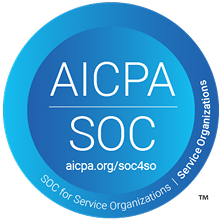QA visibility is critical at every stage of medical device manufacturing. Sterilization is no exception, yet it’s often the point where visibility is lost.
And when visibility is lost, risk creeps in.
Once a device is sealed for sterilization, it can disappear from inspection until the cycle ends. This blind spot, whether in an in-house cleanroom or through a third-party provider, exposes original equipment manufacturers (OEMs) and contract manufacturers (CMs) to logistical risk, costly rework, and gaps in traceability. EO gas sterilization logistics in particular create complex documentation challenges that make upstream QA essential.
The good news? Manufacturers can preserve QA integrity before, during, and after sterilization by strengthening inspection and chain-of-custody practices across the entire production lifecycle.
Why Sterilization Creates a QA Bottleneck
Once a device is sealed and sent for sterilization, it’s no longer accessible without compromising its sterility. If a defect is discovered after sterilization, manufacturers often face a worst-case scenario, rejecting and re-sterilizing the entire batch. The consequences are significant:
- Delays: Re-sterilization can push availability back by weeks, disrupting launch schedules or patient supply.
- Costs: Rework, logistics, and sterilization fees can add up to $600K-$2M+ for a single rejected batch
- Reputation: Recurring sterilization-stage rejections put OEM-CM relationships at risk and may draw regulatory scrutiny.
The sterilization phase is a QA blind spot not because sterilization itself compromises quality, but because inspection visibility is lost at a critical handoff point.
In-House vs. Third-Party Sterilization: Same QA Risks
Some OEMs and CMs attempt to mitigate the risk by managing sterilization internally. Others outsource sterilization to specialized vendors. But both models face similar QA traceability challenges.
Handoffs inherently create blind spots, since every transfer of product introduces opportunities for miscommunication, mislabeling, or misattributed defects. Traceability also breaks down easily because sterilization teams, whether internal or to a third-party, are rarely integrated into QA record-keeping. And both models depend heavily on the accuracy of inspections completed before sealing. If upstream QA misses a defect, sterilization only compounds the cost of discovery.
Ultimately, the challenge is not where sterilization happens, but how effectively QA data travels with the product.
The Role of Upstream Inspection Before Sealing
Investing in upstream visual inspection systems is one of the most effective ways to guard against the QA blind spots created by sterilization. Detecting defects before sterilization stops wasted cycles on nonconforming units and spares manufacturer costly rework, shipping delays, and compliance headaches.
How can earlier inspection be made more powerful? By adding AI into the process. AI-powered visual inspection placed just before sealing enables manufacturers to:
- Spot defects the human eye might miss
- Correct issues on the line without slowing throughput
- Link every inspection result back to specific units or batches for stronger traceability
By strengthening this upstream inspection stage, manufacturers not only prevent wasted sterilization cycles but also create a digital record that supports downstream decision-making. These records serve as defensible evidence during audits, speed up root cause investigations, and reinforce OEM-CM trust by pinpointing exactly when and where a defect was caught. For a deeper look at how these inspection systems are already changing production lines, see our article on 5 ways automated inspection is transforming medical manufacturing.
Chain of Custody: Why QA Documentation Must Travel with the Product
In regulated industries, QA doesn’t end when the device leaves the factory floor. Every quality decision — pass/fail, anomaly detection, override — must be time-stamped and tied to the device history record. This creates an unbroken chain of custody that protects both OEMs and CMs:
- Audit Readiness: Digital QA logs provide clean, defensible records in the event of an FDA inspection
- Faster Investigations: Traceable data accelerates root cause analysis and CAPA response in the event of a failure investigation
- OEM-CM Alignment: Shared QA records ensure both sides operate from the same source of truth, strengthening trust and accountability
When QA documentation follows the product seamlessly through sterilization, both OEMs and CMs can demonstrate accountability and alignment. Digital records eliminate the finger-pointing that often arises when defects appear post-sterilization, and they provide the kind of defensible evidence regulators expect. This continuous data trail not only safeguards compliance but also reinforces stronger OEM-CM partnerships.
For a deeper look at how digital QA logs and traceability reduce batch rejections and support audit readiness in medical device manufacturing, see Akridata’s article on AI visual inspection.
Closing the Sterilization QA Gap
Sterilization isn’t just a technical step — it’s a potential QA blind spot that can cost millions and jeopardize compliance if left unaddressed.
By combining upstream AI inspection with digital chain-of-custody documentation, manufacturers can build a more defensible quality system from end to end. This system can reduce the risk of sterilization-stage rejections, protect batch integrity and throughput, and strengthen OEM-CM partnerships with defensible QA records.
The manufacturers that succeed in closing this QA gap will be the ones who preserve both compliance and competitiveness in today’s high-stakes medical device market.
Ready to dive deeper into the benefits of more rigorous upstream QA?
- Reducing sterilization-stage rejects
- Preserving batch integrity with stronger traceability
- Aligning OEM-CM teams around shared quality standards
Download the full report today and see how upstream QA and AI inspection can help your organization reduce costly rework, safeguard compliance, and build partner trust.



No Responses